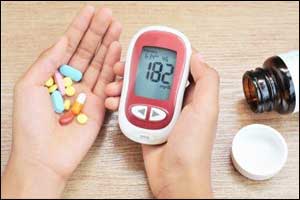- Home
- Editorial
- News
- Practice Guidelines
- Anesthesiology Guidelines
- Cancer Guidelines
- Cardiac Sciences Guidelines
- Critical Care Guidelines
- Dentistry Guidelines
- Dermatology Guidelines
- Diabetes and Endo Guidelines
- Diagnostics Guidelines
- ENT Guidelines
- Featured Practice Guidelines
- Gastroenterology Guidelines
- Geriatrics Guidelines
- Medicine Guidelines
- Nephrology Guidelines
- Neurosciences Guidelines
- Obs and Gynae Guidelines
- Ophthalmology Guidelines
- Orthopaedics Guidelines
- Paediatrics Guidelines
- Psychiatry Guidelines
- Pulmonology Guidelines
- Radiology Guidelines
- Surgery Guidelines
- Urology Guidelines
DPP-4 inhibitors best second-line option after Metformin in Diabetes: JAMA

The research team performed three retrospective, propensity-matched, new-user cohort studies with replication across 8 sites from 1975 to 2017. Medical data of 246 558 805 patients from multiple countries from the Observational Health Data Sciences and Informatics (OHDSI) initiative were included and medical datasets were transformed into a unified common data model, with the analysis done using open-source analytical tools. Participants included patients with T2D receiving metformin with at least 1 prior HbA1c laboratory test who were then prescribed either sulfonylureas, DPP-4 inhibitors, or thiazolidinediones. Data analysis was conducted from 2015 to 2018.
Treatment with sulfonylureas, DPP-4 inhibitors, or thiazolidinediones starting at least 90 days after the initial prescription of metformin.
The primary outcome is the first observation of the reduction of the HbA1c level to 7% of total hemoglobin or less after prescription of a second-line drug. Secondary outcomes are myocardial infarction, kidney disorder, and eye disorder after prescription of a second-line drug.
A total of 246 558 805 patients (126 977 785 women [51.5%]) were analyzed.
"Our findings support preferring DPP-4 inhibitors over sulfonylureas as second-line therapies," write the authors.
Key Findings:
- The effectiveness of sulfonylureas, DPP-4 inhibitors, and thiazolidinediones prescribed after metformin to lower HbA1c level to 7% or less of total hemoglobin remained indistinguishable in patients with T2D.
- Patients treated with sulfonylureas compared with DPP-4 inhibitors had a small increased consensus hazard ratio of myocardial infarction (1.12; 95% CI, 1.02-1.24) and eye disorders (1.15; 95% CI, 1.11-1.19).
- The hazard of observing kidney disorders after treatment with sulfonylureas, DPP-4 inhibitors, or thiazolidinediones was equally likely.
"Our meta-analysis indicates that none of the 3 drug classes (sulfonylureas, DPP-4 inhibitors, or thiazolidinediones) were preferentially associated with a reduction in HbA1c levels to 7% of total hemoglobin or less," conclude the authors.
"The OHDSI collaborative network can be used to conduct a large international study examining the effectiveness of second-line treatment choices made in the clinical management of T2D," they write.
For further reference follow the link: 10.1001/jamanetworkopen.2018.1755

Disclaimer: This site is primarily intended for healthcare professionals. Any content/information on this website does not replace the advice of medical and/or health professionals and should not be construed as medical/diagnostic advice/endorsement or prescription. Use of this site is subject to our terms of use, privacy policy, advertisement policy. © 2020 Minerva Medical Treatment Pvt Ltd